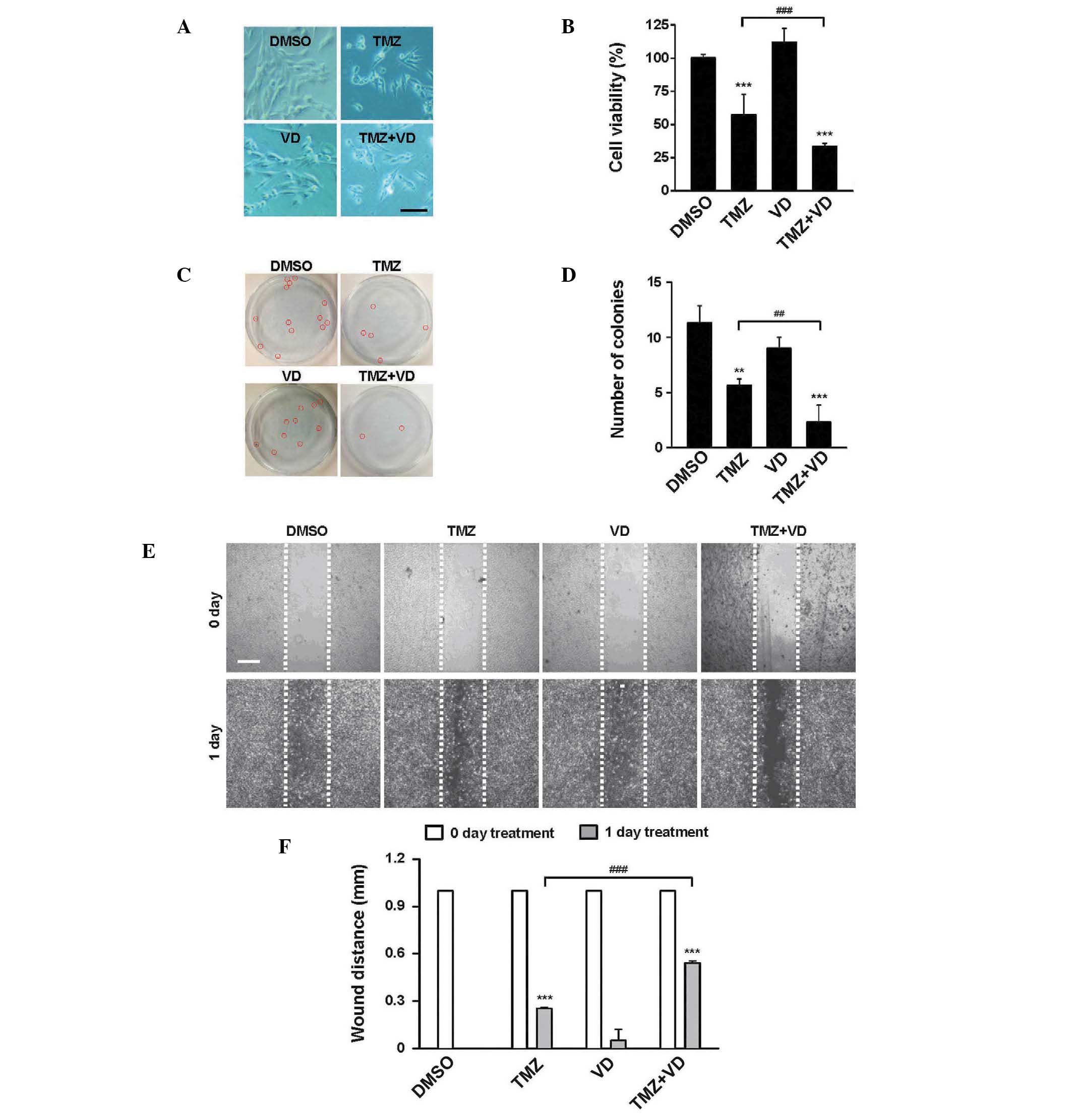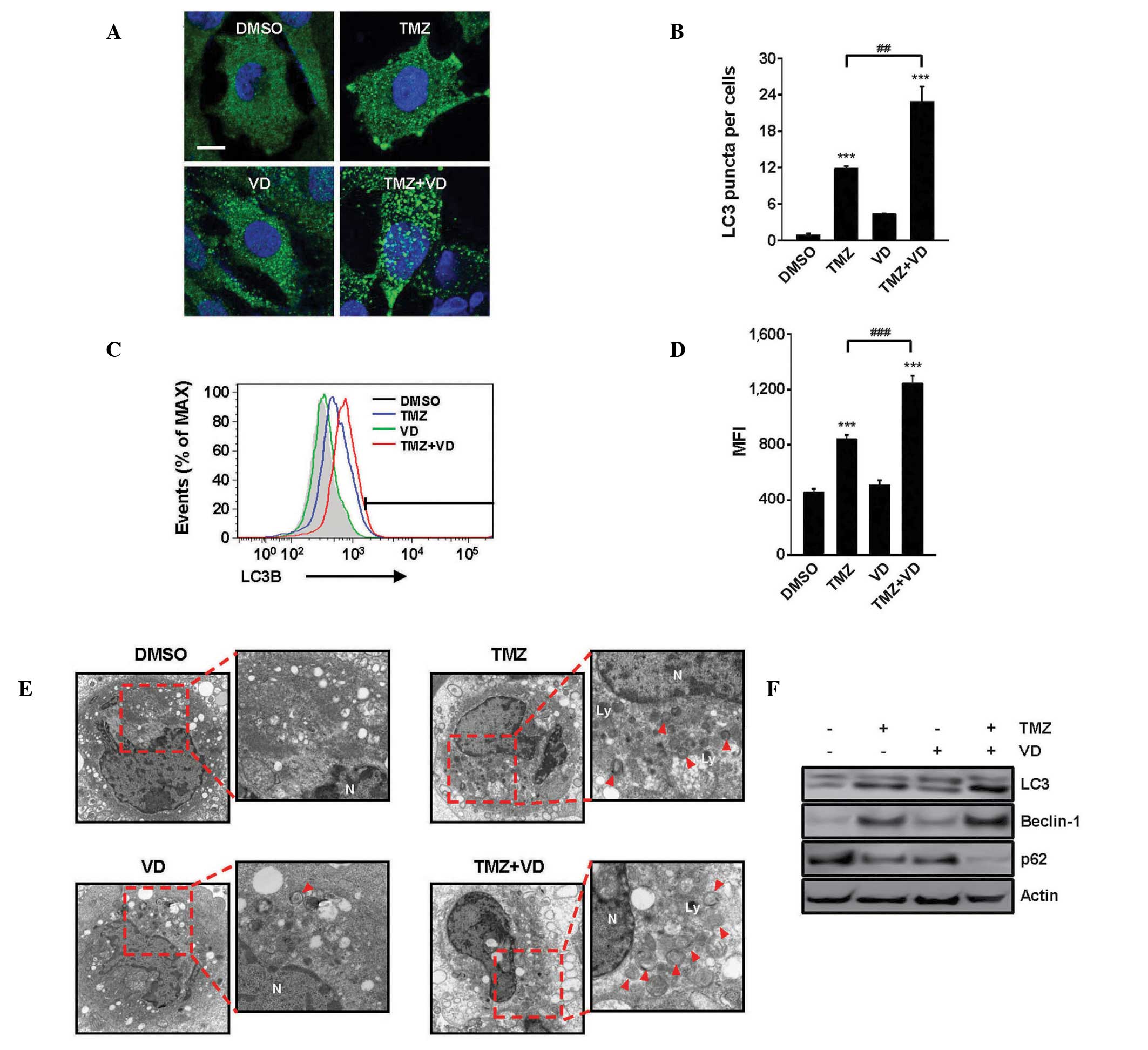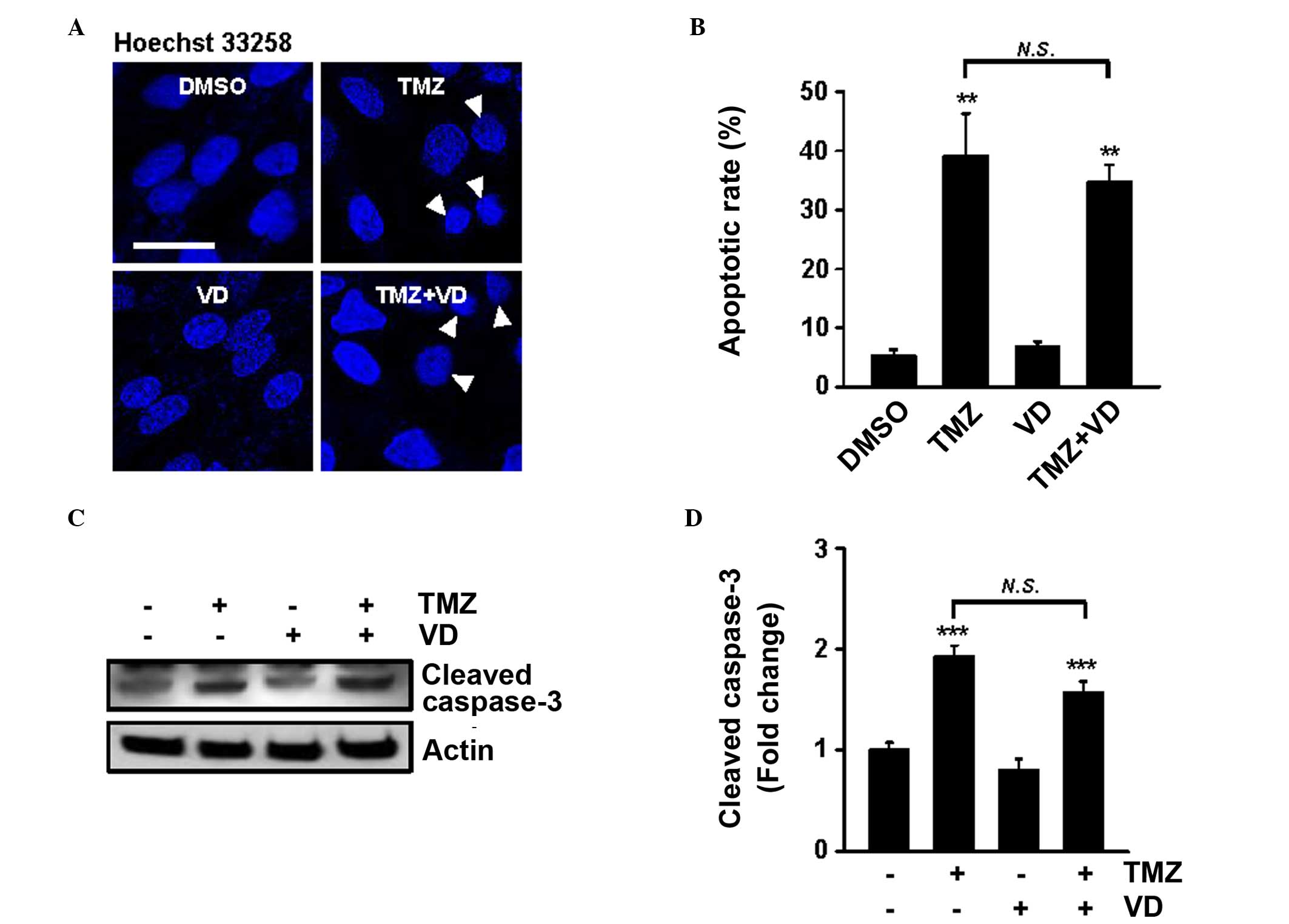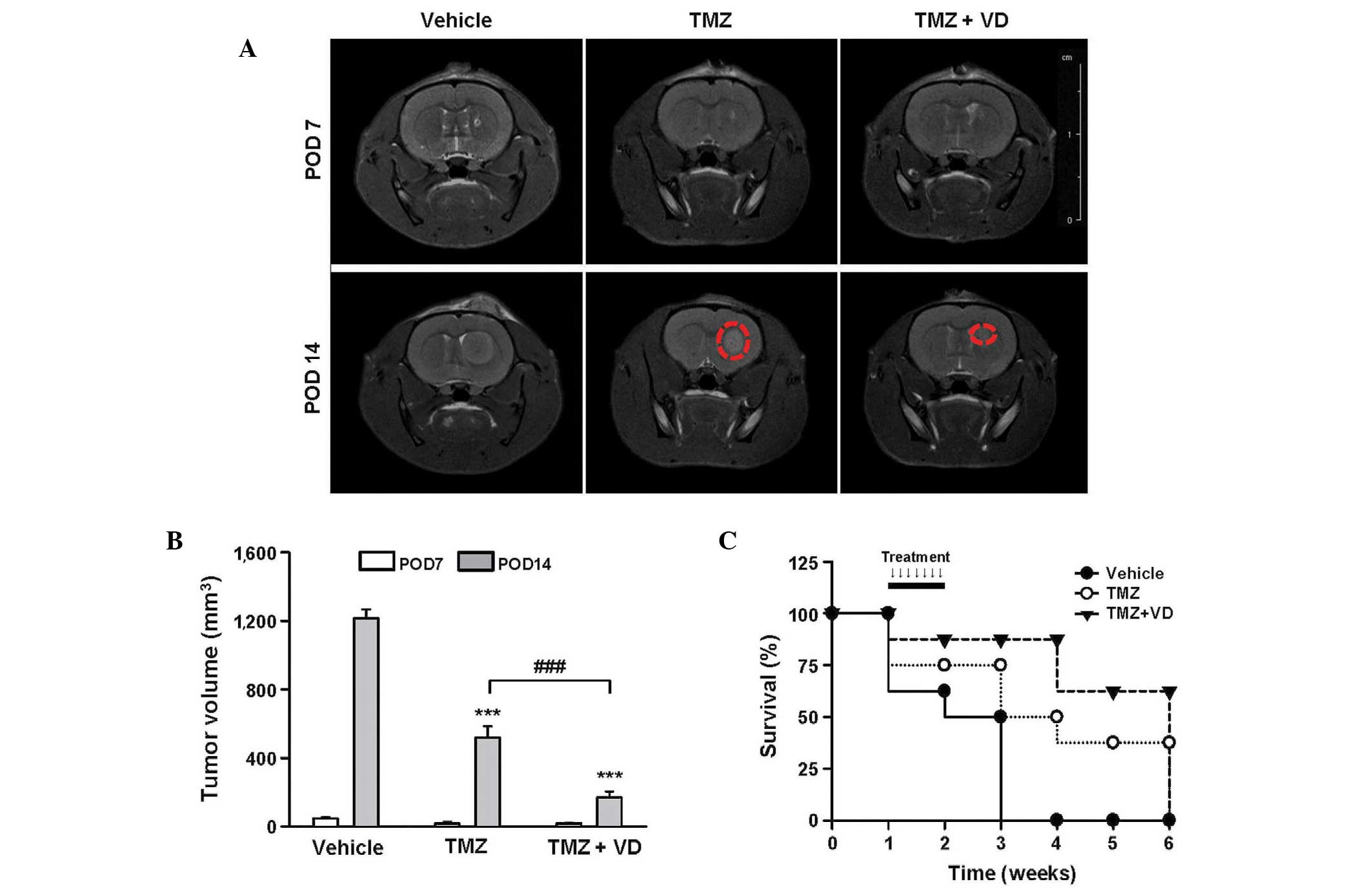|
1
|
Mahaley MS, Mettlin C, Natarajan N, Laws
ER Jr and Peace BB: National survey of patterns of care for
brain-tumor patients. J Neurosurg. 71:826–836. 1989. View Article : Google Scholar : PubMed/NCBI
|
|
2
|
Avgeropoulos NG and Batchelor TT: New
treatment strategies for malignant gliomas. Oncologist. 4:209–224.
1999.PubMed/NCBI
|
|
3
|
Bower M, Newlands ES, Bleehen NM, Brada M,
Begent RJ, Calvert H, Colquhoun I, Lewis P and Brampton MH:
Multicentre CRC phase II trial of temozolomide in recurrent or
progressive high-grade glioma. Cancer Chemother Pharmacol.
40:484–488. 1997. View Article : Google Scholar : PubMed/NCBI
|
|
4
|
Yung WK, Prados MD, Yaya-Tur R, Rosenfeld
SS, Brada M, Friedman HS, Albright R, Olson J, Chang SM, O'Neill
AM, et al: Multicenter phase II trial of temozolomide in patients
with anaplastic astrocytoma or anaplastic oligoastrocytoma at first
relapse. J Clin Oncol. 17:2762–2771. 1999.PubMed/NCBI
|
|
5
|
Newlands ES, Blackledge GR, Slack JA,
Rustin GJ, Smith DB, Stuart NS, Quarterman CP, Hoffman R, Stevens
MF and Brampton MH: Phase I trial of temozolomide (CCRG 81045:
M&B 39831: NSC 362856). Br J Cancer. 65:287–291. 1992.
View Article : Google Scholar : PubMed/NCBI
|
|
6
|
Dehdashti AR, Hegi ME, Regli L, Pica A and
Stupp R: New trends in the medical management of glioblastoma
multiforme: The role of temozolomide chemotherapy. Neurosurg Focus.
20:E62006.PubMed/NCBI
|
|
7
|
Zhang J, Stevens MF and Bradshaw TD:
Temozolomide: Mechanisms of action, repair and resistance. Curr Mol
Pharmacol. 5:102–114. 2012. View Article : Google Scholar : PubMed/NCBI
|
|
8
|
Begemann M, Kashimawo SA, Lunn RM,
Delohery T, Choi YJ, Kim S, Heitjan DF, Santella RM, Schiff PB,
Bruce JN and Weinstein IB: Growth inhibition induced by Ro 31–8220
and calphostin C in human glioblastoma cell lines is associated
with apoptosis and inhibition of CDC2 kinase. Anticancer Res.
18:3139–3152. 1998.PubMed/NCBI
|
|
9
|
Gagliano N, Moscheni C, Torri C, Donetti
E, Magnani I, Costa F, Nowicky W and Gioia M: Ukrain modulates
glial fibrillary acidic protein, but not connexin 43 expression,
and induces apoptosis in human cultured glioblastoma cells.
Anticancer Drugs. 18:669–676. 2007. View Article : Google Scholar : PubMed/NCBI
|
|
10
|
Kanzawa T, Bedwell J, Kondo Y, Kondo S and
Germano IM: Inhibition of DNA repair for sensitizing resistant
glioma cells to temozolomide. J Neurosurg. 99:1047–1052. 2003.
View Article : Google Scholar : PubMed/NCBI
|
|
11
|
Takeuchi H, Kondo Y, Fujiwara K, Kanzawa
T, Aoki H, Mills GB and Kondo S: Synergistic augmentation of
rapamycin-induced autophagy in malignant glioma cells by
phosphatidylinositol 3-kinase/protein kinase B inhibitors. Cancer
Res. 65:3336–3346. 2005.PubMed/NCBI
|
|
12
|
Takeuchi H, Kanzawa T, Kondo Y and Kondo
S: Inhibition of platelet-derived growth factor signalling induces
autophagy in malignant glioma cells. Br J Cancer. 90:1069–1075.
2004. View Article : Google Scholar : PubMed/NCBI
|
|
13
|
Kanzawa T, Germano IM, Komata T, Ito H,
Kondo Y and Kondo S: Role of autophagy in temozolomide-induced
cytotoxicity for malignant glioma cells. Cell Death Differ.
11:448–457. 2004. View Article : Google Scholar : PubMed/NCBI
|
|
14
|
Gutierrez MG, Master SS, Singh SB, Taylor
GA, Colombo MI and Deretic V: Autophagy is a defense mechanism
inhibiting BCG and Mycobacterium tuberculosis survival in
infected macrophages. Cell. 119:753–766. 2004. View Article : Google Scholar : PubMed/NCBI
|
|
15
|
Giovannucci E: Vitamin D and
cardiovascular disease. Curr Atheroscler Rep. 11:456–461. 2009.
View Article : Google Scholar : PubMed/NCBI
|
|
16
|
Xie Z and Klionsky DJ: Autophagosome
formation: Core machinery and adaptations. Nat Cell Biol.
9:1102–1109. 2007. View Article : Google Scholar : PubMed/NCBI
|
|
17
|
Campbell GR and Spector SA: Hormonally
active vitamin D3 (1alpha,25-dihydroxycholecalciferol) triggers
autophagy in human macrophages that inhibits HIV-1 infection. J
Biol Chem. 286:18890–18902. 2011. View Article : Google Scholar : PubMed/NCBI
|
|
18
|
Picotto G, Liaudat AC, Bohl L and de
Talamoni Tolosa N: Molecular aspects of vitamin D anticancer
activity. Cancer Invest. 308:604–614. 2012. View Article : Google Scholar
|
|
19
|
Høyer-Hansen M and Jäättelä M:
AMP-activated protein kinase: A universal regulator of autophagy?
Autophagy. 3:381–383. 2007. View Article : Google Scholar : PubMed/NCBI
|
|
20
|
Woods A, Dickerson K, Heath R, Hong SP,
Momcilovic M, Johnstone SR, Carlson M and Carling D:
Ca2+/calmodulin-dependent protein kinase kinase-beta
acts upstream of AMP-activated protein kinase in mammalian cells.
Cell Metab. 2:21–33. 2005. View Article : Google Scholar : PubMed/NCBI
|
|
21
|
Hannigan AM and Gorski SM: Macroautophagy:
The key ingredient to a healthy diet? Autophagy. 5:140–151. 2009.
View Article : Google Scholar : PubMed/NCBI
|
|
22
|
Zou J, Wang YX, Mu HJ, Xiang J, Wu W,
Zhang B and Xie P: Down-regulation of glutamine synthetase enhances
migration of rat astrocytes after in vitro injury. Neurochem Int.
58:404–413. 2011. View Article : Google Scholar : PubMed/NCBI
|
|
23
|
Tanida I, Ueno T and Kominami E: LC3 and
autophagy. Methods Mol Biol. 445:77–88. 2008. View Article : Google Scholar : PubMed/NCBI
|
|
24
|
Kobayashi N, Allen N, Clendenon NR and Ko
LW: An improved rat brain-tumor model. J Neurosurg. 53:808–815.
1980. View Article : Google Scholar : PubMed/NCBI
|
|
25
|
Rubin JB, Kung AL, Klein RS, Chan JA, Sun
Y, Schmidt K, Kieran MW, Luster AD and Segal RA: A small-molecule
antagonist of CXCR4 inhibits intracranial growth of primary brain
tumors. Proc Natl Acad Sci USA. 100:13513–13518. 2003. View Article : Google Scholar : PubMed/NCBI
|
|
26
|
Knizhnik AV, Roos WP, Nikolova T, Quiros
S, Tomaszowski KH, Christmann M and Kaina B: Survival and death
strategies in glioma cells: Autophagy, senescence and apoptosis
triggered by a single type of temozolomide-induced DNA damage. PLoS
One. 8:e556652013. View Article : Google Scholar : PubMed/NCBI
|
|
27
|
Wilson EN, Bristol ML, Di X, Maltese WA,
Koterba K, Beckman MJ and Gewirtz DA: A switch between
cytoprotective and cytotoxic autophagy in the radiosensitization of
breast tumor cells by chloroquine and vitamin D. Horm Cancer.
2:272–85. 2011. View Article : Google Scholar : PubMed/NCBI
|
|
28
|
Kabeya Y, Mizushima N, Ueno T, Yamamoto A,
Kirisako T, Noda T, Kominami E, Ohsumi Y and Yoshimori T: LC3, a
mammalian homologue of yeast Apg8p, is localized in autophagosome
membranes after processing. EMBO J. 19:5720–5728. 2000. View Article : Google Scholar : PubMed/NCBI
|
|
29
|
Mizushima N, Yamamoto A, Hatano M,
Kobayashi Y, Kabeya Y, Suzuki K, Tokuhisa T, Ohsumi Y and Yoshimori
T: Dissection of autophagosome formation using Apg5-deficient mouse
embryonic stem cells. J Cell Biol. 152:657–668. 2001. View Article : Google Scholar : PubMed/NCBI
|
|
30
|
Xu HD, Wu D, Gu JH, Ge JB, Wu JC, Han R,
Liang ZQ and Qin ZH: The pro-survival role of autophagy depends on
Bcl-2 under nutrition stress conditions. PLoS One. 8:e632322013.
View Article : Google Scholar : PubMed/NCBI
|
|
31
|
Kapoor GS and O'Rourke DM: Mitogenic
signaling cascades in glial tumors. Neurosurgery. 52:1425–1435.
2003. View Article : Google Scholar : PubMed/NCBI
|
|
32
|
Lefranc F, Brotchi J and Kiss R: Possible
future issues in the treatment of glioblastomas: Special emphasis
on cell migration and the resistance of migrating glioblastoma
cells to apoptosis. J Clin Oncol. 23:2411–2422. 2005. View Article : Google Scholar : PubMed/NCBI
|
|
33
|
Mizushima N, Ohsumi Y and Yoshimori T:
Autophagosome formation in mammalian cells. Cell Struct Funct.
27:421–429. 2002. View Article : Google Scholar : PubMed/NCBI
|
|
34
|
Levine B, Mizushima N and Virgin HW:
Autophagy in immunity and inflammation. Nature. 469:323–335. 2011.
View Article : Google Scholar : PubMed/NCBI
|
|
35
|
Feng Y, Ke C, Tang Q, Dong H, Zheng X, Lin
W2, Ke J, Huang J, Yeung SC and Zhang H: Metformin promotes
autophagy and apoptosis in esophageal squamous cell carcinoma by
downregulating Stat3 signaling. Cell Death Dis. 5:e10882014.
View Article : Google Scholar : PubMed/NCBI
|
|
36
|
Liu YQ, Cheng X, Guo LX, Mao C, Chen YJ,
Liu HX, Xiao QC, Jiang S, Yao ZJ and Zhou GB: Identification of an
annonaceous acetogenin mimetic, AA005, as an AMPK activator and
autophagy inducer in colon cancer cells. PLoS One. 7:e470492012.
View Article : Google Scholar : PubMed/NCBI
|
|
37
|
Miracco C, Cosci E, Oliveri G, Luzi P,
Pacenti L, Monciatti I, Mannucci S, De Nisi MC, Toscano M,
Malagnino V, et al: Protein and mRNA expression of autophagy gene
Beclin 1 in human brain tumours. Int J Oncol. 30:429–436.
2007.PubMed/NCBI
|
|
38
|
Huang X, Bai HM, Chen L, Li B and Lu YC:
Reduced expression of LC3B-II and Beclin 1 in glioblastoma
multiforme indicates a down-regulated autophagic capacity that
relates to the progression of astrocytic tumors. J Clin Neurosci.
17:1515–1519. 2010. View Article : Google Scholar : PubMed/NCBI
|
|
39
|
Aoki H, Kondo Y, Aldape K, Yamamoto A,
Iwado E, Yokoyama T, Hollingsworth EF, Kobayashi R, Hess K,
Shinojima N, et al: Monitoring autophagy in glioblastoma with
antibody against isoform B of human microtubule-associated protein
1 light chain 3. Autophagy. 4:467–475. 2008. View Article : Google Scholar : PubMed/NCBI
|
|
40
|
Jain MV, Paczulla AM, Klonisch T, Dimgba
FN, Rao SB, Roberg K, Schweizer F, Lengerke C, Davoodpour P, et al:
Interconnections between apoptotic, autophagic and necrotic
pathways: Implications for cancer therapy development. J Cell Mol
Med. 17:12–29. 2013. View Article : Google Scholar : PubMed/NCBI
|
|
41
|
Rubinsztein DC, Shpilka T and Elazar Z:
Mechanisms of autophagosome biogenesis. Curr Biol. 22:29–34. 2012.
View Article : Google Scholar
|
|
42
|
Monastyrska I and Klionsky DJ: Autophagy
in organelle homeostasis: peroxisome turnover. Mol Aspects Med.
27:483–494. 2006. View Article : Google Scholar : PubMed/NCBI
|
|
43
|
Audo I, Darjatmoko SR, Schlamp CL, Lokken
JM, Lindstrom MJ, Albert DM and Nickells RW: Vitamin D analogues
increase p53, p21, and apoptosis in a xenograft model of human
retinoblastoma. Invest Ophthalmol Vis Sci. 44:4192–4199. 2003.
View Article : Google Scholar : PubMed/NCBI
|
|
44
|
Bernardi RJ, Johnson CS, Modzelewski RA
and Trump DL: Antiproliferative effects of
1alpha,25-dihydroxyvitamin D(3) and vitamin D analogs on
tumor-derived endothelial cells. Endocrinology. 143:2508–2514.
2002. View Article : Google Scholar : PubMed/NCBI
|
|
45
|
Alvarez-Díaz S, Valle N, García JM, Peña
C, Freije JM, Quesada V, Astudillo A, Bonilla F, López-Otín C and
Muñoz A: Cystatin D is a candidate tumor suppressor gene induced by
vitamin D in human colon cancer cells. J Clin Invest.
119:2343–2358. 2009. View Article : Google Scholar : PubMed/NCBI
|
|
46
|
Gorski SM, Chittaranjan S, Pleasance ED,
Freeman JD, Anderson CL, Varhol RJ, Coughlin SM, Zuyderduyn SD,
Jones SJ and Marra MA: A SAGE approach to discovery of genes
involved in autophagic cell death. Curr Biol. 13:358–363. 2003.
View Article : Google Scholar : PubMed/NCBI
|



















